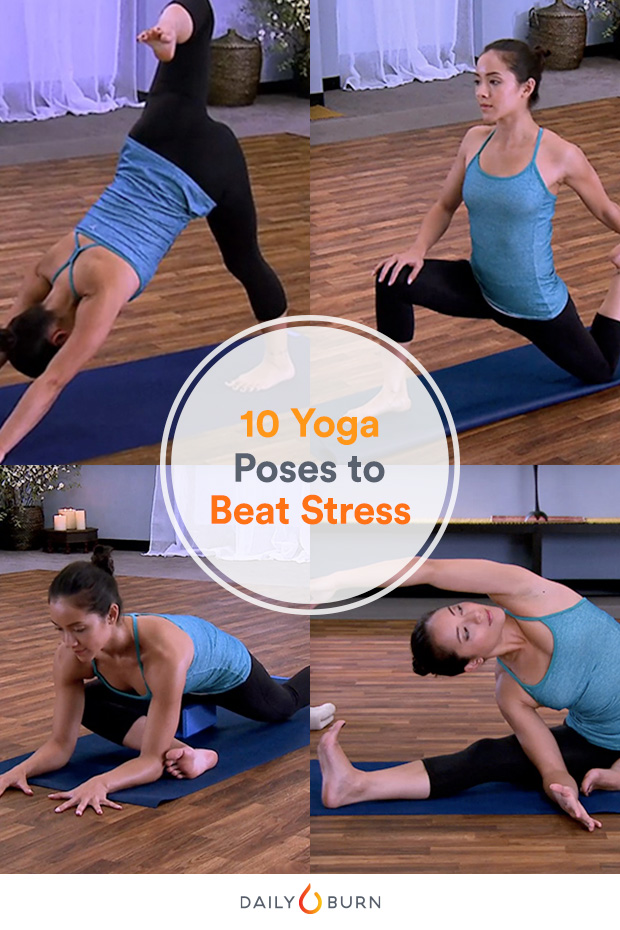
The seashell breath is an easy breathing exercise that reduces anxiety. It provides internal warmth as well as transporting you to the sea. Lewis Howes is the author of this podcast. He advises viewers to deepen their breaths starting at the bottom. The technique can be done anywhere, including standing, sitting, and lying down. For the beginning, don't wear tight clothing. You can sit down or lie down by placing your arms on your chair's arms.
This technique is easy to learn and can be done at any hour of the day. This breathing technique engages your sympathetic nervous, which controls your body’s fight-or flight response. Your body will be relaxed and you can also affect your mind. You need to find a balance between your two systems by engaging your parasympathetic nervous system. Breathing too deep can increase stress and cause your body to produce more adrenaline. This will make you feel more anxious.

Another easy breathing exercise for anxiety is the pursed-lip technique. It is an easy practice that anyone can do. It only takes a few minutes, and you'll be able to do it without any assistance. This breathing exercise can help you gain control of your emotions, and reduce anxiety. There are many ways to perform this breathing exercise, and some of them are more effective than others.
Dirga Swasam Pranayama is a popular breathing method for anxiety. It is focused on the abdomen, diaphragm, upper chest. To do this exercise, it is best to be comfortable and either lie down or sit down. This exercise requires you to close your lips and breathe deeply. During this time, you should focus on your breathing. You should feel fullness in your lungs. This will help you relax and reduce anxiety.
Breathing exercises to alleviate anxiety are a good way to reduce your negative thoughts. For those with anxiety, a particular type of breathing exercise is recommended. This is a simple and quick exercise that takes only a few minutes. You'll be amazed at how quickly you can achieve results after you have done it for a few weeks. You will feel more relaxed and able to deal with any situation without anxiety.

You can practice anxiety breathing exercises anywhere and anytime. These exercises can be done in silence. It will make you feel less anxious and calmer. It will help to keep your eyes on the future and allow you be more focused. You'll also be more focused if you practice these exercises regularly. These exercises will make your life easier, especially if you do them over and over again.
FAQ
What is the difference in calorie and kilocalories?
Calories can be used to measure how much energy is in food. Calories are a unit of measurement. One calorie is equal to one degree Celsius in energy.
Kilocalories is another name for calories. Kilocalories are measured in thousandths of a calorie. 1000 calories are equal to one kilocalorie.
What can you do to boost your immune system?
There are trillions upon trillions on cells in the human body. Each cell works together to create organs and tissues that fulfill specific functions. Another cell takes its place when a cell dies. Chemical signals, called hormones, allow cells to communicate with each other. Hormones regulate all bodily processes, from growth and development to metabolism and immunity.
Hormones can be described as chemicals produced by glands in the body. They travel through our bloodstream and act as messengers, controlling how our bodies function. Some hormones are produced internally while others are made outside of the body.
The release of hormones from a hormone producing gland into the bloodstream is the beginning of hormone production. Once hormones are released they move through the bloodstream until they reach their intended organ. Some hormones may only remain active for a limited time. Others hormones remain active longer and still have an influence on the body's functioning long after they leave bloodstream.
Some hormones may be produced in large numbers. Some hormones are produced in large quantities.
Some hormones are produced at certain times during life. The production of estrogen can occur during puberty and pregnancy, as well as menopause and old age. Estrogen is important for women to develop breasts and maintain bone density. It also helps prevent osteoporosis. It helps to stimulate hair growth and maintains skin's softness.
What should I eat?
Take in lots of fruits and veggies. These fruits and vegetables are high in vitamins, minerals, which can help you keep your immune systems strong. Fruits and veggies are also high in fiber, which makes them filling and helps with digestion. You should eat at least five servings per day of fruit or veg.
Make sure you drink plenty of water too. Water helps flush toxins out of your body and makes you feel fuller between meals. Drink about eight glasses each day.
Choose whole grains over refined grains. Whole grains retain all nutrients including B vitamins, iron and zinc as well as calcium, magnesium, calcium, protein, and magnesium. Refined grains are stripped of some of their nutritional value.
Avoid sugary beverages. Sugary drinks can be a source of empty calories, which can lead to obesity. Choose water, milk or unsweetened tea instead.
Avoid fast food. Fast food has very low nutritional value. It may taste great but it won't give you the energy you need to function properly. Use healthier options, such as soups, sandwiches, salads, and pasta.
Try to limit alcohol intake. Alcohol is a poor nutrient and has empty calories. Limit yourself to no more than two alcoholic beverages a week.
Red meats should be avoided. Red meats can be high in cholesterol and saturated fat. Instead, choose lean cuts of beef and pork, lamb, chicken or fish.
How can I tell what is good for me?
You need to listen to your body. Your body will tell you how much exercise, nutrition, and sleep you need. It is important to listen to your body to ensure you are not doing too much. Pay attention to your body, and ensure that you are doing all you can to keep yourself healthy.
How do I get enough vitamins for my body?
You can obtain most of your daily requirement through diet alone. However, if you are deficient in any particular vitamin, taking supplements can help. A multivitamin can contain all the vitamins that you need. You can also get individual vitamins from your local pharmacy.
Talk to your doctor if you have concerns about your nutritional intake. For example, dark green leafy vegetables such as spinach, broccoli, kale, collard greens, turnip greens, mustard greens, bok choy, romaine lettuce, arugula, and Swiss chard are rich in vitamins K and E. Other good sources include oranges, tomatoes, strawberries, cantaloupe, carrots, sweet potatoes, pumpkin, and squash.
Ask your doctor if there is any doubt about how much vitamin you should be taking. Your medical history and current health will help you determine the best dosage.
Which lifestyle is best for your health?
Living a healthy lifestyle is one that encourages you to eat well, exercise regularly, get enough sleep, and avoids stress. This will ensure that you live a long healthy life.
Start small by changing your diet and exercising routine. For example, if you want to lose weight, try walking for 30 minutes every day. Or, if you want to get more active, take up swimming or dancing. An online fitness program such as Strava or Fitbit that tracks your activity could be a good option.
Statistics
- This article received 11 testimonials and 86% of readers who voted found it helpful, earning it our reader-approved status. (wikihow.com)
- According to the 2020 Dietary Guidelines for Americans, a balanced diet high in fruits and vegetables, lean protein, low-fat dairy and whole grains is needed for optimal energy. (mayoclinichealthsystem.org)
- WHO recommends consuming less than 5% of total energy intake for additional health benefits. (who.int)
- WHO recommends reducing saturated fats to less than 10% of total energy intake; reducing trans-fats to less than 1% of total energy intake; and replacing both saturated fats and trans-fats to unsaturated fats. (who.int)
External Links
How To
What does the "vitamins” word mean?
Vitamins are organic substances found naturally in food. Vitamins help us absorb nutrients from foods we eat. Vitamins cannot come from the body so food must provide them.
There are two types of vitamins: water soluble and fat soluble. Water-soluble vitamins dissolve readily in water. Vitamin C,B1(thiamine), B2 (2riboflavin), and B3 (3niacin), as well as vitamin C,B1, B2 (riboflavin), and B3 (niacin), vitamin B6 (pyridoxine), vitamin folic acid (biotin), pantothenic, and choline are examples. The liver and fatty tissues are home to fat-soluble vitamins. Examples include vitamin D, E, K, A, and beta carotene.
Vitamins can be classified by their biological activity. There are eight major categories of vitamins.
-
A - essential for normal growth and maintenance of health.
-
C – essential for proper nerve function.
-
D - Essential for healthy teeth and bones.
-
E is required for good vision and reproduction.
-
K - Essential for healthy muscles and nerves.
-
P - Essential for strong bones and teeth.
-
Q - Aids digestion and iron absorption
-
R – Required for the formation of red blood vessels.
The recommended daily allowance (RDA) of vitamins varies depending on age, gender, and physical condition. The U.S. Food and Drug Administration sets RDA values.
For adults 19 years and over, the RDA of vitamin A is 400mg per day. Pregnant women require 600 micrograms daily to support fetal development. Children ages 1-8 require 900 micrograms per day. For infants younger than one year, 700 micrograms are required daily. However, this number drops to 500 micrograms each day for children aged 9-12 months.
Children aged between 1-18 years require 800 micrograms of sugar per day, while overweight children need 1000 micrograms. Children who are underweight receive 1200 micrograms every day to meet their nutritional requirements.
2200 mg of vitamin A per day is required for children aged 4-8 who have been diagnosed by anemia.
2000 micrograms per person is necessary for general health. Breastfeeding or pregnant women require 3000 micrograms per daily due to higher nutrient demands.
Adults over 70 require 1500 micrograms each day, since they lose around 10% of their muscle mass every decade.
Women who are pregnant and lactating need more nutrients than the RDA. Pregnant and breastfeeding women require 4000 micrograms each day during pregnancy and 2500 Micrograms each day after delivery. Breastfeeding mothers require 5000 micrograms daily when breast milk production is occurring.